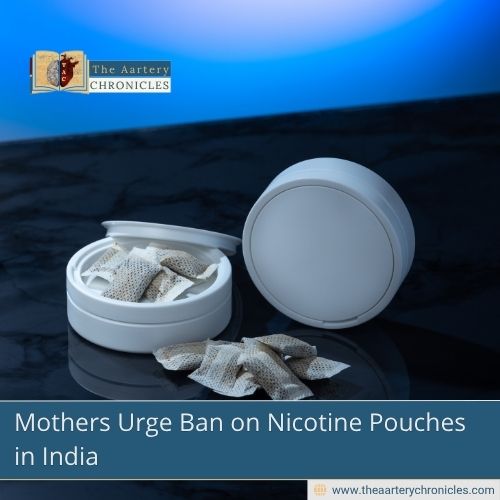

World AIDS Day 2024: India’s Fight for Equal Healthcare Access
Every year on December 1, people around the world come together for World AIDS Day, an event that’s been observed since 1988. It’s a day to raise awareness about HIV (Human Immunodeficiency Virus) and AIDS (Acquired Immune Deficiency Syndrome) and show support in the fight against this global health issue.
This day also commemorates those who have lost their lives to AIDS and celebrates the progress made in prevention, treatment, and care. The 2024 theme, “Take the Rights Path: My Health, My Right!”, emphasises healthcare access and the empowerment of individuals to manage their health, focusing on reducing stigma and promoting inclusivity.
What is HIV?
Human Immunodeficiency Virus (HIV) is a virus that attacks the body’s immune system, specifically targeting CD4 cells (T cells), which help fight infections.
If left untreated, HIV can weaken the immune system, leading to Acquired Immunodeficiency Syndrome (AIDS), the most severe stage of HIV infection.
India’s Progress in Combating HIV/AIDS
India has made significant strides in its battle against HIV/AIDS, with over 2.5 million people living with HIV (PLHIV).
- The India HIV Estimations 2023 report reveals a notable decline in new infections, with a 44% reduction since 2010, outperforming the global reduction rate of 39%.
- As of June 2023, more than 16.06 lakh people are receiving free antiretroviral therapy (ART) at 725 ART centers, ensuring vital treatment access.
National AIDS Control Programme (NACP)
The National AIDS Control Programme (NACP), launched in 1992, has played a pivotal role in India’s response. Over the years, it has evolved through five phases:
- NACP Phase I (1992-1999): Focused on awareness and blood safety.
- NACP Phase II (1999-2007): Introduced direct interventions and strengthened state-level program management.
- NACP Phase III (2007-2012): Expanded district-level efforts and decentralized program management.
- NACP Phase IV (2012-2017): Consolidated gains with increased government funding and launched the “Test and Treat” policy.
NACP Phase V (2021-2026): Aims to reduce new infections and AIDS-related mortality by 80% by 2025-26, focusing on eliminating vertical transmission and reducing stigma.
"You cannot fight HIV without empowering people, without ensuring they have access to healthcare, and without confronting stigma and discrimination."
Dr. Anthony Fauci, Director, National Institute of Allergy and Infectious Diseases (NIAID) Tweet
WHO South-East Asia and India’s Role
India plays a pivotal role in the WHO South-East Asia Region, contributing significantly to the regional fight against HIV/AIDS.
- The region is home to 3.9 million people living with HIV (PLHIV), with
- 78% aware of their status
- 66% receiving lifesaving antiretroviral therapy (ART)
However, marginalized groups continue to face heightened vulnerability due to stigma and discrimination, such as:
- Men who have sex with men (MSM)
- Sex workers
- Transgender individuals
The Ministerial Declaration on Adolescent-Responsive Health Systems (October 2024) underscores India’s dedication to building inclusive healthcare systems, especially for youth aged 15-24, who account for nearly half of new infections. Strengthening comprehensive sexual education and ensuring access to youth-friendly health services remain essential in addressing the ongoing challenges.
Innovations and the Path Forward
Technological advancements are bridging gaps in healthcare access, such as
- Mobile health apps
- Telemedicine
- Virtual support groups
Additionally, biomedical tools like Pre-Exposure Prophylaxis (PrEP) and Post-Exposure Prophylaxis (PEP) are critical in reducing HIV transmission.
India’s ‘Triple Elimination’ Initiative targeting the elimination of vertical transmission of HIV, syphilis, and hepatitis B sets a benchmark for public health priorities.
Modes of Transmission
HIV is transmitted through the exchange of specific body fluids from an infected person. Common modes include:
- Unprotected Sexual Contact: Vaginal, anal, or oral sex with an infected partner.
- Blood Transmission: Sharing needles, syringes, or exposure to contaminated blood.
- Mother-to-Child Transmission: During pregnancy, childbirth, or breastfeeding.
- Blood Transfusions: Rare in countries with stringent blood safety protocols.
- Occupational Exposure: Healthcare workers through accidental needle sticks.
HIV is not transmitted through casual contact, such as
- Hugging
- Shaking hands
- Sharing food
Conclusion
World AIDS Day 2024 reminds us of the urgent need to address systemic inequalities and ensure universal access to healthcare. India’s comprehensive approach, through the NACP Phase-V, demonstrates the power of collaborative action, rights-based strategies, and innovative solutions. By continuing to prioritize inclusivity, address stigma, and scale up effective interventions, India is well-positioned to lead the global fight against HIV/AIDS, moving closer to the goal of ending AIDS as a public health threat by 2030.









